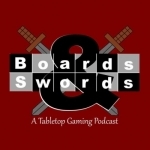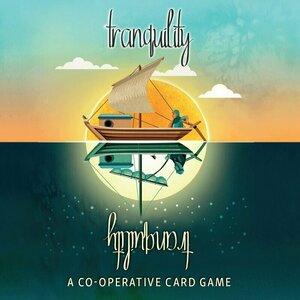Search
Search results
Purple Phoenix Games (2266 KP) rated The Lost Expedition in Tabletop Games
Jul 22, 2021
El Dorado – the lost city of gold. Many have searched for this fabled civilization, but none have prevailed… yet. Gather up your team of experts and pack your bags for the jungle – you’re headed on an adventure! Can you find the path to this lost city and get there alive? Or will the encounters of the wilderness prove to be too much to handle? Only one way to find out….
Disclaimer: The Lost Expedition can be played cooperatively, solo, or head-to-head. This review only covers the cooperative version of the game! -L
The Lost Expedition is a cooperative (in this case) game of strategy and hand management in which players are trying to traverse the jungle to reach El Dorado by carefully managing their Resources and utilizing their collective Expertise. To setup the game, choose 3 explorers to form your team, and collect 3 Ammunition and 4 Food from the supply tokens. Shuffle the adventure cards, dealing 4 to every player, placing the remainder in a face-down draw deck. Depending on the difficulty selected, place the corresponding number of Expedition cards in a row on the table (we played Normal mode, using 9 Expedition cards). Place 4 Health tokens on each explorer card, place the phase token with the Morning side up, select a starting expedition leader, and the game is ready to begin.
Each round consists of 2 phases: Morning and Evening. During the Morning phase, players will take turns playing adventure cards from their hand, one at a time, until each player has played 2 cards. This line of cards forms the path that the explorers are traveling in the morning. After all cards have been played, they will be rearranged in numerical order, from lowest to highest. Once the cards are organized, they will be resolved one at a time, from lowest to highest, until all cards have been addressed. Examples of card actions are: discarding the next card in play, swapping two cards on the path, adding a new card to the end of the path, or moving the team pawn one card closer to El Dorado. Adventure cards have different colored boxes that indicate action choices that the players must make. Some actions are mandatory and must be completed. Some cards offer 2 or more choices, one of which must be selected and performed to clear the card. And some cards have optional choices, that do not have to be completed for the card to be resolved. Certain actions will require the team to gain/spend Resources tokens or Expertise from your explorers (in the form of Health tokens). At the end of the Morning phase, the team loses 1 Food token, and play continues to the Evening phase.
During the Evening phase, the gameplay is like that of the Morning with a couple of changes. Players again will alternate playing cards, but will play until all remaining cards in their hand have been played. Cards in the Evening phase are resolved in the order that they are played, and are not organized numerically like in the Morning phase. Again, after all cards are played, they will be resolved one by one as normal, paying Resources/Expertise as required. Once the Evening phase is finished, the team loses 1 Food token, players draw a new hand of cards, select another expedition leader, and a new round begins with the Morning phase. Play continues in this fashion until either the players have reached El Dorado, all 3 of the team’s explorers have died (have no remaining Health tokens), or if the adventure card draw deck runs out 2 times during play.
Pretty straight-forward, right? Play cards, resolve cards, repeat. That is one thing I really like about The Lost Expedition – it is simple, yet so strategic. Ultimately this is a game of Resource/Expertise management. You need at least 1 explorer to make it to El Dorado alive. There is no reward without risk in this game. Couple that with the multiple action options on each card, and you’ve really got to have a strategy. Maybe you’re low on Ammunition, but in order to gain back some much-needed Health, you’ve got to spend Ammo. Or are you willing to deal damage to an explorer if it means the team can advance a card? There are so many things to consider, and so many ways in which you can strategize, and that keeps all players engaged.
That being said, players are not allowed to reveal the details of any cards in hand. So how can you best communicate with your team about what types of cards to play if you can’t tell them point-blank? That added aspect of working in a team creates some unique strategies in and of itself. Ultimately, the final decision comes down to the expedition leader for the round – but what if they choose the action you didn’t want? How can everyone help balance everyone else out? You really have to work together to be successful. The flip-side of that teamwork is that the game can be frustrating in some aspects. You never truly know what your teammates are going to play at any given time, and the card they choose could totally unravel your plan. Not being able to discuss the specifics of cards in your hand makes sense (because then why wouldn’t the team just have one collective hand of cards?), but it adds an element of randomness and luck to the game that seems counterintuitive to me. Playing the wrong card at the wrong time might just turn your team against you, and that undermines the spirit of the game.
Let’s touch briefly on components. The cards are nice, oversized, and sturdy. The artwork is colorful and thematically appropriate. All of the Resources tokens are thick cardboard, and the meeples are nice and chunky. All in all, good production quality overall.
So how do I really feel about The Lost Expedition? I think it’s ok. It is strategic and entertaining, with the added elements of teamwork and cooperation – you either win together or lose together. As a group, you’ve got to have an adaptable strategy and manage your resources as best you can. Is it a game that I love? No. But it’s one that will probably stay in my collection for a bit, before it moves on to someone who might see some hidden quality that I may have missed. If you want a nice and relatively simple team game to play, maybe check out The Lost Expedition. And if risk/reward or resource management isn’t your jam, then maybe keep looking beyond this one. Purple Phoenix Games give The Lost Expedition an eventful 6 / 12.
Disclaimer: The Lost Expedition can be played cooperatively, solo, or head-to-head. This review only covers the cooperative version of the game! -L
The Lost Expedition is a cooperative (in this case) game of strategy and hand management in which players are trying to traverse the jungle to reach El Dorado by carefully managing their Resources and utilizing their collective Expertise. To setup the game, choose 3 explorers to form your team, and collect 3 Ammunition and 4 Food from the supply tokens. Shuffle the adventure cards, dealing 4 to every player, placing the remainder in a face-down draw deck. Depending on the difficulty selected, place the corresponding number of Expedition cards in a row on the table (we played Normal mode, using 9 Expedition cards). Place 4 Health tokens on each explorer card, place the phase token with the Morning side up, select a starting expedition leader, and the game is ready to begin.
Each round consists of 2 phases: Morning and Evening. During the Morning phase, players will take turns playing adventure cards from their hand, one at a time, until each player has played 2 cards. This line of cards forms the path that the explorers are traveling in the morning. After all cards have been played, they will be rearranged in numerical order, from lowest to highest. Once the cards are organized, they will be resolved one at a time, from lowest to highest, until all cards have been addressed. Examples of card actions are: discarding the next card in play, swapping two cards on the path, adding a new card to the end of the path, or moving the team pawn one card closer to El Dorado. Adventure cards have different colored boxes that indicate action choices that the players must make. Some actions are mandatory and must be completed. Some cards offer 2 or more choices, one of which must be selected and performed to clear the card. And some cards have optional choices, that do not have to be completed for the card to be resolved. Certain actions will require the team to gain/spend Resources tokens or Expertise from your explorers (in the form of Health tokens). At the end of the Morning phase, the team loses 1 Food token, and play continues to the Evening phase.
During the Evening phase, the gameplay is like that of the Morning with a couple of changes. Players again will alternate playing cards, but will play until all remaining cards in their hand have been played. Cards in the Evening phase are resolved in the order that they are played, and are not organized numerically like in the Morning phase. Again, after all cards are played, they will be resolved one by one as normal, paying Resources/Expertise as required. Once the Evening phase is finished, the team loses 1 Food token, players draw a new hand of cards, select another expedition leader, and a new round begins with the Morning phase. Play continues in this fashion until either the players have reached El Dorado, all 3 of the team’s explorers have died (have no remaining Health tokens), or if the adventure card draw deck runs out 2 times during play.
Pretty straight-forward, right? Play cards, resolve cards, repeat. That is one thing I really like about The Lost Expedition – it is simple, yet so strategic. Ultimately this is a game of Resource/Expertise management. You need at least 1 explorer to make it to El Dorado alive. There is no reward without risk in this game. Couple that with the multiple action options on each card, and you’ve really got to have a strategy. Maybe you’re low on Ammunition, but in order to gain back some much-needed Health, you’ve got to spend Ammo. Or are you willing to deal damage to an explorer if it means the team can advance a card? There are so many things to consider, and so many ways in which you can strategize, and that keeps all players engaged.
That being said, players are not allowed to reveal the details of any cards in hand. So how can you best communicate with your team about what types of cards to play if you can’t tell them point-blank? That added aspect of working in a team creates some unique strategies in and of itself. Ultimately, the final decision comes down to the expedition leader for the round – but what if they choose the action you didn’t want? How can everyone help balance everyone else out? You really have to work together to be successful. The flip-side of that teamwork is that the game can be frustrating in some aspects. You never truly know what your teammates are going to play at any given time, and the card they choose could totally unravel your plan. Not being able to discuss the specifics of cards in your hand makes sense (because then why wouldn’t the team just have one collective hand of cards?), but it adds an element of randomness and luck to the game that seems counterintuitive to me. Playing the wrong card at the wrong time might just turn your team against you, and that undermines the spirit of the game.
Let’s touch briefly on components. The cards are nice, oversized, and sturdy. The artwork is colorful and thematically appropriate. All of the Resources tokens are thick cardboard, and the meeples are nice and chunky. All in all, good production quality overall.
So how do I really feel about The Lost Expedition? I think it’s ok. It is strategic and entertaining, with the added elements of teamwork and cooperation – you either win together or lose together. As a group, you’ve got to have an adaptable strategy and manage your resources as best you can. Is it a game that I love? No. But it’s one that will probably stay in my collection for a bit, before it moves on to someone who might see some hidden quality that I may have missed. If you want a nice and relatively simple team game to play, maybe check out The Lost Expedition. And if risk/reward or resource management isn’t your jam, then maybe keep looking beyond this one. Purple Phoenix Games give The Lost Expedition an eventful 6 / 12.
Purple Phoenix Games (2266 KP) rated Tranquility in Tabletop Games
Oct 21, 2021
Are you a boat person? As in, do you enjoy lounging on a boat, floating to nowhere in particular, just enjoying the day? Or are you a thrill-seeking water-skiier or tuber that enjoys shredding the waves and nearly drowning? Perhaps you are neither. I am definitely in the first category. I would rather just toot around a lake in a boat, maybe throw out a fishing pole, and just enjoy being out on the water with little care for what may be happening in the world around me. So when I heard that Lucky Duck Games was planning on publishing Tranquility I just had to jump at the opportunity to get it on my table. And I was definitely impressed.
Tranquility is a cooperative hand management, tile placement card game for one to five players. In it players will be attempting to create a sea of islands around which they sail their boat towards infinite paradise. They will accomplish this by laying numbered cards from their hand in numerical order before any of the players run out of chances to play a card. Oh, and there’s also no talking during the game. That’s kind of a big deal.
DISCLAIMER: We were provided a copy of this game for the purposes of this review. This is a retail copy of the game, so what you see in these photos is exactly what would be received in your box. I do not intend to cover every single rule included in the rulebook, but will describe the overall game flow and major rule set so that our readers may get a sense of how the game plays. For more in depth rules, you may purchase a copy online or from your FLGS. -T
To setup the standard game, place all the border cards around a 6×6 grid, as in the photo below. Shuffle the appropriate number of Start and Finish cards into the deck of Island cards and place that beside the grid. Draw a hand of five cards and the game may begin. Setup is similar to the multiplayer setup, with a few changes. Once the hand of cards has been drawn, the game may begin! It is the solo player’s goal to build the sea of island cards, and place the Start and Finish cards before they run out of cards to be legally played.
The game is played over many turns. Each turn players will be either playing a card from hand or discarding two cards. When a player plays a card from hand to the grid, they may place it anywhere they wish within the grid. The goal is to have each card placed numerically in order beginning from the lower left of the grid in a zig-zag pattern left to right, then ascending to the next highest level. In other words, the play area would be ordered numerically as English-speaking people read, but from the bottom up instead of the top down – like a reverse typewriter.
When a card is played, the player may choose to place it in its own area, or immediately next to another card already in play. If the new card is placed adjacent to an existing card, the player must discard cards equal to the difference between the values of the two adjacent cards. For example, if a 12 is placed next to a 14, then the player would need to discard two cards after placement. If a card is placed that is already in direct numerical order, no discards are needed. Again, a card at the right-hand edge of a row is adjacent to the card on the next row higher on the left-hand edge, and this is the most difficult aspect of the game to grasp for new players.
Should a player instead wish to discard two cards for their turn, they do so to their discard pile. After each action (playing a card or discarding two cards) the player will draw back up to their hand of five cards.
Eventually, the player will happen across the Start and Finish cards. In the solo game, when a Start card is placed (outside the grid, but in amongst the border cards in the lower left-hand corner), the player will need to draw eight cards from the draw deck, keep four, and discard the remaining eight. This eats up cards from the draw pile and draws the game closer to the end. When the grid is completed and all the numbered cards are in numerical order, the player may then play the Finish card to end the game. If all cards are properly placed the player wins! If not, they must try again. Probably immediately, because it is that kind of game.
Components. This game is a bunch of square cards in a cubic box. Now, while that doesn’t sound super exciting, the art on the cards certainly make up for the lack of component diversity. Each card is matte finished, which I prefer for cards with great art on them. And oh man, that art is something wonderful! I have always been a fan of Tristam Rossin’s art, and it is on full display here. The cards are, well, I guess I cannot find the correct word because they aren’t double-sided, but split on the horizontal, with a daytime scene on the “top” and a nighttime scene on the “bottom” (or vice-versa, however you feel). I have nothing but praise for the components here.
The gameplay is familiar in feel, but definitely a little different and a whole lot of fun. Fans of The Mind will find this familiar in that the game is structured around silent players building a grid/stack of numerically appropriate cards until the win condition is met. However, I have not been able to play The Mind solo, and Tranquility comes with solo rules in the box. So that’s a win in my book.
Now, Tranquility solo is no cakewalk. No, there are no other players to make crazy decisions to throw off any tactics planned, but you most certainly can misjudge where to place a card, and then be married to its position as you try to fill in all the appropriate cards around it. I learned that all too early when I decided my first game that I should try to divide the grid into equal sections and approximate where a 48 should go. Well, I’ll tell you now that a 48 has absolutely no business being a row above a 19 (check the photo above if you don’t believe me). Silly choices like this make for an afternoon of pondering optimal placements when unboxing your next play, and that brings a smile to my face. Any time I think about a game the next day or several days later and it entices me to play again with a different strategy, I feel is the mark of a great game.
I have yet to play this with a group (damn COVID), but I know the people I play with are going to love this one. And, honestly, I am going to love the peace and quiet as the game plays out, so I can think about my turn and then think about a different possibility once someone ruins my plans. But I tell you what, even as a solo game, this one is great. I am quite happy to keep this as a pure solo experience, but I do want to try it once with others. We do not typically give out ratings for Solo Chronicles reviews, but this one would be pretty high, I’m telling you now. Okay, I have to go get the boat ready and pack my cooler. Enjoy Tranquility!
Tranquility is a cooperative hand management, tile placement card game for one to five players. In it players will be attempting to create a sea of islands around which they sail their boat towards infinite paradise. They will accomplish this by laying numbered cards from their hand in numerical order before any of the players run out of chances to play a card. Oh, and there’s also no talking during the game. That’s kind of a big deal.
DISCLAIMER: We were provided a copy of this game for the purposes of this review. This is a retail copy of the game, so what you see in these photos is exactly what would be received in your box. I do not intend to cover every single rule included in the rulebook, but will describe the overall game flow and major rule set so that our readers may get a sense of how the game plays. For more in depth rules, you may purchase a copy online or from your FLGS. -T
To setup the standard game, place all the border cards around a 6×6 grid, as in the photo below. Shuffle the appropriate number of Start and Finish cards into the deck of Island cards and place that beside the grid. Draw a hand of five cards and the game may begin. Setup is similar to the multiplayer setup, with a few changes. Once the hand of cards has been drawn, the game may begin! It is the solo player’s goal to build the sea of island cards, and place the Start and Finish cards before they run out of cards to be legally played.
The game is played over many turns. Each turn players will be either playing a card from hand or discarding two cards. When a player plays a card from hand to the grid, they may place it anywhere they wish within the grid. The goal is to have each card placed numerically in order beginning from the lower left of the grid in a zig-zag pattern left to right, then ascending to the next highest level. In other words, the play area would be ordered numerically as English-speaking people read, but from the bottom up instead of the top down – like a reverse typewriter.
When a card is played, the player may choose to place it in its own area, or immediately next to another card already in play. If the new card is placed adjacent to an existing card, the player must discard cards equal to the difference between the values of the two adjacent cards. For example, if a 12 is placed next to a 14, then the player would need to discard two cards after placement. If a card is placed that is already in direct numerical order, no discards are needed. Again, a card at the right-hand edge of a row is adjacent to the card on the next row higher on the left-hand edge, and this is the most difficult aspect of the game to grasp for new players.
Should a player instead wish to discard two cards for their turn, they do so to their discard pile. After each action (playing a card or discarding two cards) the player will draw back up to their hand of five cards.
Eventually, the player will happen across the Start and Finish cards. In the solo game, when a Start card is placed (outside the grid, but in amongst the border cards in the lower left-hand corner), the player will need to draw eight cards from the draw deck, keep four, and discard the remaining eight. This eats up cards from the draw pile and draws the game closer to the end. When the grid is completed and all the numbered cards are in numerical order, the player may then play the Finish card to end the game. If all cards are properly placed the player wins! If not, they must try again. Probably immediately, because it is that kind of game.
Components. This game is a bunch of square cards in a cubic box. Now, while that doesn’t sound super exciting, the art on the cards certainly make up for the lack of component diversity. Each card is matte finished, which I prefer for cards with great art on them. And oh man, that art is something wonderful! I have always been a fan of Tristam Rossin’s art, and it is on full display here. The cards are, well, I guess I cannot find the correct word because they aren’t double-sided, but split on the horizontal, with a daytime scene on the “top” and a nighttime scene on the “bottom” (or vice-versa, however you feel). I have nothing but praise for the components here.
The gameplay is familiar in feel, but definitely a little different and a whole lot of fun. Fans of The Mind will find this familiar in that the game is structured around silent players building a grid/stack of numerically appropriate cards until the win condition is met. However, I have not been able to play The Mind solo, and Tranquility comes with solo rules in the box. So that’s a win in my book.
Now, Tranquility solo is no cakewalk. No, there are no other players to make crazy decisions to throw off any tactics planned, but you most certainly can misjudge where to place a card, and then be married to its position as you try to fill in all the appropriate cards around it. I learned that all too early when I decided my first game that I should try to divide the grid into equal sections and approximate where a 48 should go. Well, I’ll tell you now that a 48 has absolutely no business being a row above a 19 (check the photo above if you don’t believe me). Silly choices like this make for an afternoon of pondering optimal placements when unboxing your next play, and that brings a smile to my face. Any time I think about a game the next day or several days later and it entices me to play again with a different strategy, I feel is the mark of a great game.
I have yet to play this with a group (damn COVID), but I know the people I play with are going to love this one. And, honestly, I am going to love the peace and quiet as the game plays out, so I can think about my turn and then think about a different possibility once someone ruins my plans. But I tell you what, even as a solo game, this one is great. I am quite happy to keep this as a pure solo experience, but I do want to try it once with others. We do not typically give out ratings for Solo Chronicles reviews, but this one would be pretty high, I’m telling you now. Okay, I have to go get the boat ready and pack my cooler. Enjoy Tranquility!
Ross (33 KP) rated Zombies!!! in Tabletop Games
Mar 6, 2019
Zombies!!! Family fun
Purple Phoenix Games (2266 KP) rated That Snow Moon in Tabletop Games
Jun 12, 2019 (Updated Jun 12, 2019)
Many years ago, in a star system located quite a long ways away from our own…… Remind you of a wildly successful fantasy film series involving laser swords, telekinetic powers, and space travel? That snow coincidence. Ha! See what I did there?
That Snow Moon is a card game of dexterity, mixed with some bluffing. Players are divided between two ‘teams’ – the Liberation (good guys) and the Dynasty (bad guys). The goals are simple. The Liberation is trying to assemble a set of plans to be used in the destruction of the Snow Moon. The Dynasty is trying to destroy the Liberation base and stop them from acquiring those plans. I don’t know about you, but if they turned this into a movie, I would probably watch it.
Here’s the kicker though – you don’t simply PLAY cards in this game. You toss/drop them. Yep, you read that right. In this game, you throw cards. Each team takes turns tossing cards into the play area, in hopes of creating clusters of touching cards that activate powers to aid in the completion of their respective goals. Bluffing comes into play because Liberation cards can be played face-down, and remain that way until exposed by a Dynasty card. Can you trick the Dynasty into revealing a card whose power you want to use, or will they see through your ruse and expose and eliminate your more powerful cards? On the flip side, can you foil the plans of the rebellious Liberation, or will they be sly enough to avoid detection? The final fate of your galaxy is up in the air – literally.
The premise of this game sounded really cool to me, but when I actually got to play it, it was quite….underwhelming. In theory, tossing cards puts a unique twist on the standard card game. But the unpredictability of actually tossing/dropping cards makes this game way more luck-driven than strategic to me. It should be noted that we have a PnP of this game – sleeved and with regular playing cards added to beef up the cards. Maybe if we had a retail version, the cards would be easier to manipulate? I’m not sure. At times it just felt futile to try to strategize certain tosses because they cards are going to fall where they may. The actual gameplay is a little bland too – it feels like it’s missing something. Maybe adding more action options or more complex/powerful card powers would up the ante a little bit. The game, as is, just kind of feels like 16-Card-Pick-Up to me.
As a huge fan of the brand-name muse of this game, That Snow Moon fell flat for me. It feels a little too simple, yet wildly unpredictable at the same time. Is it a game I’d pull out to play again? I don’t know – maybe? It’s not high on my list. That snow joke, Purple Phoenix Games gives it a disappointing 9 / 18.
https://purplephoenixgames.wordpress.com/2019/05/30/that-snow-moon-review/
That Snow Moon is a card game of dexterity, mixed with some bluffing. Players are divided between two ‘teams’ – the Liberation (good guys) and the Dynasty (bad guys). The goals are simple. The Liberation is trying to assemble a set of plans to be used in the destruction of the Snow Moon. The Dynasty is trying to destroy the Liberation base and stop them from acquiring those plans. I don’t know about you, but if they turned this into a movie, I would probably watch it.
Here’s the kicker though – you don’t simply PLAY cards in this game. You toss/drop them. Yep, you read that right. In this game, you throw cards. Each team takes turns tossing cards into the play area, in hopes of creating clusters of touching cards that activate powers to aid in the completion of their respective goals. Bluffing comes into play because Liberation cards can be played face-down, and remain that way until exposed by a Dynasty card. Can you trick the Dynasty into revealing a card whose power you want to use, or will they see through your ruse and expose and eliminate your more powerful cards? On the flip side, can you foil the plans of the rebellious Liberation, or will they be sly enough to avoid detection? The final fate of your galaxy is up in the air – literally.
The premise of this game sounded really cool to me, but when I actually got to play it, it was quite….underwhelming. In theory, tossing cards puts a unique twist on the standard card game. But the unpredictability of actually tossing/dropping cards makes this game way more luck-driven than strategic to me. It should be noted that we have a PnP of this game – sleeved and with regular playing cards added to beef up the cards. Maybe if we had a retail version, the cards would be easier to manipulate? I’m not sure. At times it just felt futile to try to strategize certain tosses because they cards are going to fall where they may. The actual gameplay is a little bland too – it feels like it’s missing something. Maybe adding more action options or more complex/powerful card powers would up the ante a little bit. The game, as is, just kind of feels like 16-Card-Pick-Up to me.
As a huge fan of the brand-name muse of this game, That Snow Moon fell flat for me. It feels a little too simple, yet wildly unpredictable at the same time. Is it a game I’d pull out to play again? I don’t know – maybe? It’s not high on my list. That snow joke, Purple Phoenix Games gives it a disappointing 9 / 18.
https://purplephoenixgames.wordpress.com/2019/05/30/that-snow-moon-review/

Lawrie Bond, Microcar Man: An Illustrated History of Bond Cars
Book
Once a common sight on Britain's roads, few people today seem to have heard of the Bond Minicar not...

Boards & Swords | Board Games / Card Games / Roleplaying Games
Podcast
Every other week, Chris, Collin, Cindy, and Philip talk about all kinds of tabletop gaming: Board...

Vehicles and Cars Kids Racing : car racing game for kids simple and fun !
Games and Entertainment
App
A wonderful car racing game for kids with a stunning collection of vehicles ! Does your kid love...






